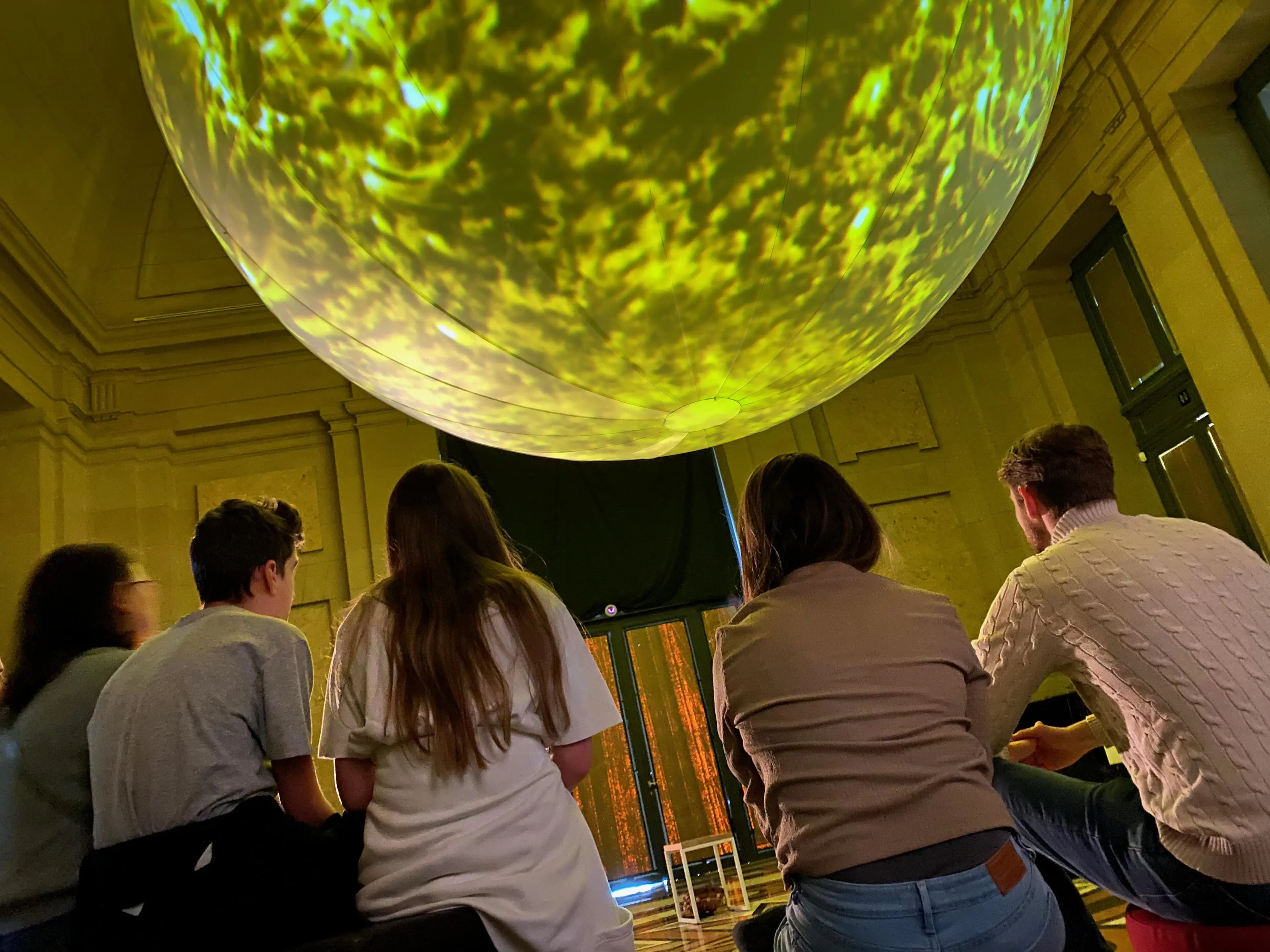SUN, an awe-inspiring 3D recreation of the Sun created by public artist Alex Rinsler and Professor Robert Walsh, professor of astrophysics at the University of Central Lancashire (UCLan), is making its European debut at the Royal Museum for Central Africa in Brussels.
The six-metre light artwork presents data from NASA’s Solar Dynamic Observatory in 360° with smoke effects to mimic the outer atmosphere of our closest star. Visitors to the exhibition will witness 10 weeks of the sun’s life in 12-and-a-half minutes as it cycles through temperatures ranging from 4,500 to 10 million degrees, accompanied by an original soundscape from multimedia artist Ebe Oke and countertenor Feargal Mostyn-Williams.
The installation, undertaken in collaboration with the Royal Observatory of Belgium, also showcases some of the Africa Museum and the Solar-Terrestrial Centre of Excellence’s world-leading research on the sun and the climate on earth.
"SUN aims to engage and inspire the next generation of scientists and artists, so we’re delighted to be showcasing this to a European audience for the first time in its history"
— Robert Walsh, Professor of Astrophysics at UCLan and SUN project lead
Designed to communicate the Sun’s awesome, life-giving power in an accessible way, SUN premiered at Blackpool’s annual Lightpool festival in 2019 with support from Arts Council England and the Science and Technologies Facilities Council. It will remain at the Royal Museum for Central Africa until 24 April 2022 before featuring at the University of Warwick and Jodrell Bank Observatory, in Cheshire, in July 2022.
Robert Walsh, Professor of Astrophysics at UCLan and SUN project lead, said: “SUN aims to engage and inspire the next generation of scientists and artists, so we’re delighted to be showcasing this to a European audience for the first time in its history.
“The Sun is central to life and our climate on Earth, and the exhibition will bring visitors closer to important research in this area, helping them learn more about this vital star at the centre of our solar system.”
Dr Elke D'Huys, Science Communication Coordinator for the Solar-Terrestrial Centre of Excellence at the Royal Observatory of Belgium, added: “We are extremely excited to bring SUN to the unique historical setting of the Africa Museum. Having the installation there, gives us the opportunity to reach a completely new audience and kindle their interest in our marvellous star.”



